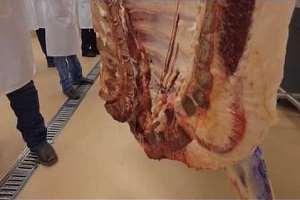Yield grade. Every day cattle are valued on it, but few know its history.
A 1960 study of 160 carcasses serves as the basis for the industry-wide equation.

“In that day and that era, the primary animal was a short-statured, early maturing Hereford steer and the close trim of that day to retail consumer was a half inch on roasts and a quarter inch on steaks and other thin meat cuts,” said Ty Lawrence, West Texas A&M animal scientist. “The industry has moved to larger cattle, leaner cuts, and we account for the entire carcass today, something that wasn't done on that original equation.”
Today’s coolers look much different than they would have a half a century ago.
“In those original data, the heaviest carcass weighed 900 pounds,” Lawrence said. “On Monday, the average weighed 907 pounds, so we have already surpassed on average the absolute end of the spectrum of the cattle that are used to create the equation that we use today.”
The animal scientist says it’s time to bring that arithmetic into modern times.
“We make great advances in nutritional technology given that we are now on the eighth version or eighth edition of nutrient requirements for beef cattle,” Lawrence said, “but we're still on version one of the yield grade equation and it's time to update and to make new advances.”
One suggestion? Make the premiums and discounts linear rather than thresholds.
Click here to see more...